How much will it cost contractors to comply with the Renovation, Repair, and Painting (EPA RRP) Rule?
 First, there are up-front costs including firm certification (required to offer, sell and or be under contract to perform the work) and the cost of Certified Renovator training for those doing and or supervising the actual work. Other up front costs can include tools and equipment needed to perform the work including a HEPA vacuum, cleaning equipment, personal protection equipment for workers, specialized tools and containment related equipment such as products like Zip Walls.
First, there are up-front costs including firm certification (required to offer, sell and or be under contract to perform the work) and the cost of Certified Renovator training for those doing and or supervising the actual work. Other up front costs can include tools and equipment needed to perform the work including a HEPA vacuum, cleaning equipment, personal protection equipment for workers, specialized tools and containment related equipment such as products like Zip Walls.
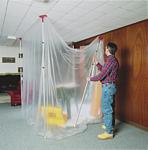
There will also be job related costs specific to the kind of work performed. Examples could include additional labor, tape, plastic sheeting, cleaning solutions, sprayers, staples, disposable wipes, HEPA filters, trash bags, tack pads, etc. Click here to request a tools and supplies shopping list. Contractors will need to consider new estimating categories/divisions as well as matching job costing categories to help verify and or improved estimated cost assumptions. Time cards and labor tracking codes should also be considered.
Contractors should also be aware of related overhead costs. These costs could include employee time to fill out and maintain required documentation, training of non-certified workers, delivery and documentation of pre-education materials, marketing and sales related expenses, time trying to get answers from the EPA, recertification costs, employee health testing, updating contracts, legal advice, insurance costs, continuing education, law suits, etc.
Contractors should devise ways to separate out EPA RRP related job costs and overhead expenses within their financial system in a way that gives them the ability to determine how RRP related compliance affects their costs of doing business.
Here is how the EPA answers this question:
"Information collected by EPA for the purposes of the rulemaking indicates that many contractors already follow some of the work practices required by the rule, such as using disposable plastic sheeting to cover floors and objects in the work area. These estimates do not include the costs of those practices.
EPA estimates that the costs of containment, cleaning, and cleaning verification will range from $8 to $167 per job, with the exception of those exterior jobs where vertical containment would be required. This includes:
· Costs of equipment (for example, plastic sheeting, tape, HEPA vacuums and tool shrouds - the equipment varies by job).
· Costs of labor (for example, the time required to perform cleaning and cleaning verification).
In addition to work practice costs, your costs will include training fees and certification fees. The costs include:
· Training costs to individual renovators working in pre-1978 housing or child-occupied facilities who must take a course from an accredited training provider (cost is set by the training provider; estimated to be about $200 for a 5-year certification).
· Certification costs to firms to obtain certification from EPA ($300 fee to the U.S. Treasury for a 5-year certification. (This fee is required by law to cover program administration)."
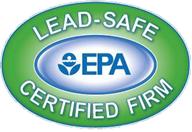 The RRP Rule requires that firms be certified with the EPA before offering or performing work that falls under the rule. This fact is clearly stated in the rule and further explained in the FAQ section of the EPA website. The rule also says that the EPA has up to 90 days to process firm applications. Apparently, even though many businesses will be required to follow the RRP rule in its entirety, the EPA can decide which part(s) of the rule they will follow, or not. In the letter, the EPA justifies not following the requirements of the RRP Rule in regards to the firm certification requirement as follows:
The RRP Rule requires that firms be certified with the EPA before offering or performing work that falls under the rule. This fact is clearly stated in the rule and further explained in the FAQ section of the EPA website. The rule also says that the EPA has up to 90 days to process firm applications. Apparently, even though many businesses will be required to follow the RRP rule in its entirety, the EPA can decide which part(s) of the rule they will follow, or not. In the letter, the EPA justifies not following the requirements of the RRP Rule in regards to the firm certification requirement as follows:
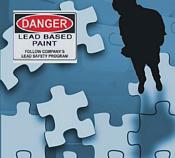 Looking for accurate information about the EPA RRP rule?
Looking for accurate information about the EPA RRP rule?  work practices and training requirements.
work practices and training requirements.
 The RI Rule does differ in many ways from the EPA RRP Rule. Contractors who have attended the EPA Certified Renovator classes should review the regulations for differences in the RI rule before working in RI to avoid potential violations and any related penalties and or fines.
The RI Rule does differ in many ways from the EPA RRP Rule. Contractors who have attended the EPA Certified Renovator classes should review the regulations for differences in the RI rule before working in RI to avoid potential violations and any related penalties and or fines. Massachusetts renovation contractors and others who work on homes and child occupied facilities built prior to 1978 need to be aware that the MA Division of Occupational Safety filed emergency regulations on April 2, 2010, at 454 CMR 22.00 The new regulations replace the previous Deleading regulations with new regulations entitled Deleading and Lead-Safe Renovation.
Massachusetts renovation contractors and others who work on homes and child occupied facilities built prior to 1978 need to be aware that the MA Division of Occupational Safety filed emergency regulations on April 2, 2010, at 454 CMR 22.00 The new regulations replace the previous Deleading regulations with new regulations entitled Deleading and Lead-Safe Renovation.  effect on April 22, 2010 was approved and announced in 2008, the state only recently began the process required by the EPA to take over administration of the rule. Due to the time, research and related efforts required to write their own rule and get it approved by EPA, and the fact that they started the process so close to the EPA Rule's effective date, contractors will have to be aware of and work under three different sets of regulations during 2010. First, depending on whom administers the program (DOS or EPA), there will be different rules. Second, even when the MA emergency regulations are approved by EPA and become enforced by DOS in Massachusetts, those regulations will eventually be replaced by a new final rule.
effect on April 22, 2010 was approved and announced in 2008, the state only recently began the process required by the EPA to take over administration of the rule. Due to the time, research and related efforts required to write their own rule and get it approved by EPA, and the fact that they started the process so close to the EPA Rule's effective date, contractors will have to be aware of and work under three different sets of regulations during 2010. First, depending on whom administers the program (DOS or EPA), there will be different rules. Second, even when the MA emergency regulations are approved by EPA and become enforced by DOS in Massachusetts, those regulations will eventually be replaced by a new final rule. First, there are up-front costs including firm certification (required to offer, sell and or be under contract to perform the work) and the cost of Certified Renovator training for those doing and or supervising the actual work. Other up front costs can include tools and equipment needed to perform the work including a HEPA vacuum, cleaning equipment, personal protection equipment for workers, specialized tools and containment related equipment such as products like Zip Walls.
First, there are up-front costs including firm certification (required to offer, sell and or be under contract to perform the work) and the cost of Certified Renovator training for those doing and or supervising the actual work. Other up front costs can include tools and equipment needed to perform the work including a HEPA vacuum, cleaning equipment, personal protection equipment for workers, specialized tools and containment related equipment such as products like Zip Walls.

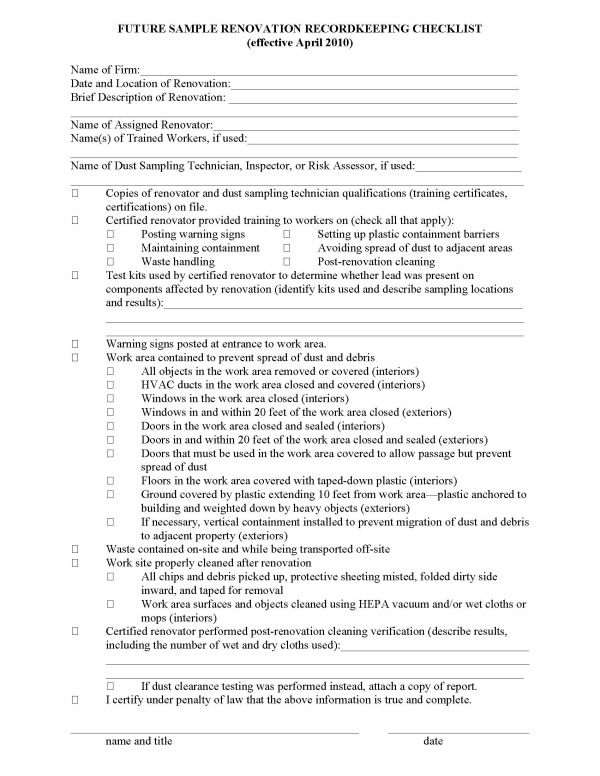 PA
PA

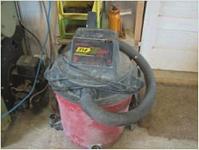 The EPA has established a specific definition for a HEPA Vacuum under the EPA RRP Rule. A Shop vac equipped with a HEPA filter will not satisfy the requirements of the RRP Rule. Using the wrong vacuum for RRP work could subject you to a $37,500 fine per violation per day of use of the wrong vacuum.
The EPA has established a specific definition for a HEPA Vacuum under the EPA RRP Rule. A Shop vac equipped with a HEPA filter will not satisfy the requirements of the RRP Rule. Using the wrong vacuum for RRP work could subject you to a $37,500 fine per violation per day of use of the wrong vacuum.  "Final rule requirements. Vacuums used as part of the work practices being finalized in this final rule must be HEPA vacuums which are to be used and emptied in a manner that minimizes the reentry of lead into the workplace. The term "HEPA vacuum'' is defined as a vacuum which has been designed with a HEPA filter as the last filtration stage. A HEPA filter is a filter that is capable of capturing particles of 0.3 microns with 99.97% efficiency. The vacuum cleaner must be designed so that all the air drawn into the machine is expelled through the filter with none of the air leaking past it."
"Final rule requirements. Vacuums used as part of the work practices being finalized in this final rule must be HEPA vacuums which are to be used and emptied in a manner that minimizes the reentry of lead into the workplace. The term "HEPA vacuum'' is defined as a vacuum which has been designed with a HEPA filter as the last filtration stage. A HEPA filter is a filter that is capable of capturing particles of 0.3 microns with 99.97% efficiency. The vacuum cleaner must be designed so that all the air drawn into the machine is expelled through the filter with none of the air leaking past it."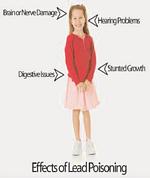 Note: If the home owner has removed all painted surfaces and or has already done all required demo, renovators should still be cautious. Just because all of the painted surfaces have been removed does not ensure that there is no lead dust still present in a work area. If the renovator spreads that dust while working, he or she could still be held liable for doing so. If demolition has been done by others prior to the start of work, it might be wise to have the area tested before you begin your work.
Note: If the home owner has removed all painted surfaces and or has already done all required demo, renovators should still be cautious. Just because all of the painted surfaces have been removed does not ensure that there is no lead dust still present in a work area. If the renovator spreads that dust while working, he or she could still be held liable for doing so. If demolition has been done by others prior to the start of work, it might be wise to have the area tested before you begin your work. According to the EPA web site:
According to the EPA web site:


